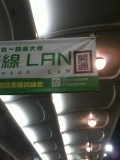Personal Health Update
I wasn’t exactly handed a winning ticket at the Genetic Lottery. As a kid, it would have taken less time to list the parts that did work as they should have. But things got under control and I am generally fine these days.
However, God personally hates me and wants to make sure I know it. Which is why I belong to the statistically improbable demographic of young people with recurring kidney stone problems despite relatively healthy dietary habits.
On a nearly regular basis, about once every two years, I get to enjoy the pain of childbirth, minus naming process and postpartum hormones rush.
On the plus side, with the years, the routine has started to take the edge off (or I am developing a much higher tolerance to pain): when a stone episode strikes, nowadays, I just casually recoil in a fetal position for a couple hours at a time while waiting for it to pass after a week or so; years ago: I would longingly stare at a kitchen knife while considering my options for self-surgery on the spot.
The other good thing is that I have learned to recognise early symptoms (as well as the time they are likely to occur: mine always happen in Winter, for no reason any specialist has ever been able to explain satisfyingly), which helps preventing me from making bad decisions… such as embarking on a 15 hour trip home to San Francisco from Paris via London (aka: the Story of my First Stone). Testament to the good old pre-911 days: when some security guy at Heathrow noticed the sweaty, grimacing guy waiting for his plane, went and asked “Sir, I must ask you: have you been consuming any drugs?” and got a near-hysterical answer of “No, but if you have any, I’ll take them!” through gritted teeth… he just walked away as he came.
These days, once the chest pain shows up, I would know better than trying to lob it with, for sole comfort, 2 aspirins and a cup of boiling hot tea purchased on the Eurostar.
Three days into the current episode, I finally went for a consultation at my nearby hospital: a CT scan confirmed the obvious and I was sent on my way with the usual advices and a couple prescription drugs.
Incidentally: I paid ¥5,000 (less than $50) for a full consultation and a CT scan, both of which took a grand total of 40 minutes, from the moment I stepped into my neighbourhood clinic. The actual cost, pre-universal-coverage, was ¥19,000, or about $200 (for that money, a US CT technician won’t even spit on you): dear US readers, aren’t you glad you live in a country gloriously free of such pesky Universal Healthcare and reasonable health costs.
Anyway, all that to say that I am slightly incapacitated at the moment, and lagging on communication (although oddly productive on whatever I manage to put my mind to, in between two bouts of holding my abdomen, wondering if downing a bottle of Draino might help). It will get better and I’ll catch up on email and everything, soon (i.e. anywhere from next week to next year).
That’s it for the immediate personal health update. Everybody with a normally working pair of kidneys and zero interest in the practice of hobbyist medicine at home can (and should) stop reading right now. Trust me, there’s nothing interesting under the fold.
Continue reading
